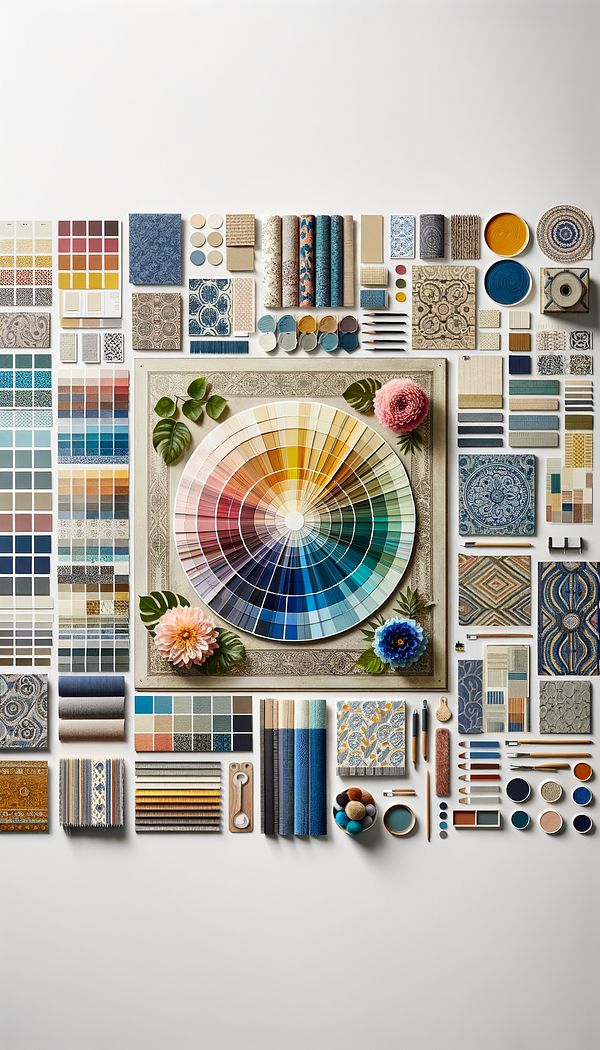What is a Colour Palette?
A colour palette is a selection of colors used to create a particular look or feel in an interior space.
Description
A colour palette serves as the foundation of any well-designed space, providing a harmonious selection of colors that dictate the overall aesthetic and atmosphere of a room. It can range from simple, with just a few colors, to complex, featuring a broad spectrum of shades and tones. The selection typically includes both primary colors, which serve as the dominant hues, and secondary colors, which are used for accents and highlights. The right colour palette can both reflect personal style and affect mood, making it an essential element in interior design.
Developing a colour palette often starts with a source of inspiration, such as a piece of artwork, a natural landscape, or even a favorite piece of clothing. This inspiration guides the color choices, ensuring they work well together to create a cohesive look. Colour theory, which explores the relationship between colors, plays a significant role in this process, helping designers understand which colors complement each other and achieve the desired effect. Whether aiming for a calming retreat or a vibrant space for entertaining, the colour palette sets the tone.
Incorporating the selected palette into a space involves more than just wall paint; it extends to fabrics, furniture, accessories, and even lighting. Each element within the room contributes to the overall colour scheme, reinforcing the chosen aesthetic.
Usage
For example, a seaside-inspired living room might feature a colour palette of blues, greens, and sandy beiges, evoking the calming colors of the beach and ocean. Meanwhile, a modern minimalist space might lean on a monochrome palette, using various shades of grey to create depth and interest without overwhelming the senses. In a more vibrant setting, such as a children's playroom, a primary color palette with bright reds, blues, and yellows can create a playful and energizing atmosphere.
FAQs
-
How do I choose a colour palette for my home?
Start by identifying a source of inspiration and consider the mood you want to create. Use colour theory to select a mix of primary and secondary colors that work well together, and don't be afraid to experiment with samples in your space.
-
Can a colour palette include patterns and textures?
Absolutely. While a colour palette primarily focuses on colors, incorporating patterns, textures, and materials can add depth and interest to your space, enriching the overall design.
-
Is it necessary to strictly adhere to a colour palette?
While a colour palette guides your design choices, flexibility is key. Feel free to incorporate unexpected accents or personal items that may not strictly match but complement your overall scheme. It's important that your space reflects your style and feels cohesive rather than constrained.
Practical Application
To apply a colour palette effectively, begin by painting a mood board with your selected colors, textures, and patterns. This visual tool will help ensure coherence across your design choices. As you select items for your room, refer back to your mood board to maintain a consistent aesthetic. Remember, the aim is to achieve a balanced look that suits your style and serves the intended function of the space.
-
Decorative Techniques322 articles
-
Decorating Principles & Elements330 articles
-
Materials & Textiles360 articles
-
Color & Patterns154 articles
-
VelvetVelvet is a luxurious fabric known for its soft, dense pile and distinctive sheen.
-
PipingPiping is a decorative design element, consisting of a strip of folded fabric, used for trimming or outlining the seams of furniture or soft furnishings.
-
English RegencyEnglish Regency is a design style that emerged in the early 19th century, characterized by its refinement, elegance, and incorporation of elements from ancient Greek and Roman architecture.
-
Linen-PressA linen-press is a type of cabinet traditionally used for storing linens, such as sheets, tablecloths, and towels.
-
Rolled ArmsRolled arms are a style of sofa and chair armrests characterized by their rounded, curling shape.
